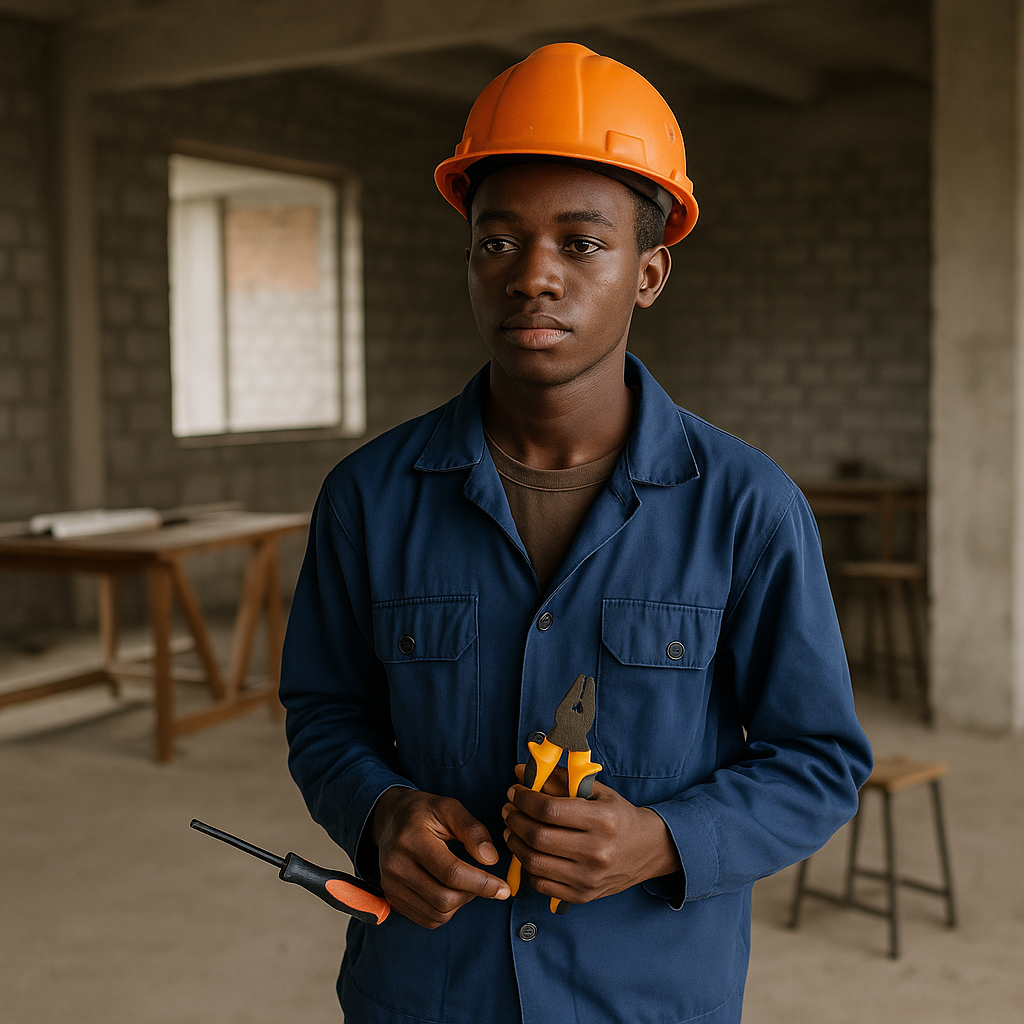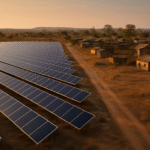|
Obtenez votre Trinity Audio joueur prêt...
|
When I spoke to a senior human-resources lead at a major solar-energy company early this year, I expected standard answers: “We need more graduates,” “We lack training,” “We need government support.”
What startled me instead was what she said, simply, “We have the ambition in the continent; what we lack is systemic readiness.”
That one sentence unlocked what many of us sense but rarely say out loud: in Africa, the crisis of unemployment, joblessness and idle youth is less about the young people themselves and far more about the systems that are supposed to enable them.
It is about broken pipelines, from school to vocational training, from certification to employment, from employer demand to skills supply.
The numbers speak volumes
Africa holds the world’s youngest population: roughly 60% of its citizens are under the age of 25. (United Nations)
Yet when it comes to renewable-energy jobs, Africa had just 324,000 positions in 2023, a tiny fraction of the 16.2 million worldwide.
Vocational pathways, the backbone of every industrial economy, are strikingly thin:
- In Sub-Saharan Africa, only 1.8% of lower-secondary students attend vocational programmes.
- Northern Africa stands at 31%.
A UNICEF global analysis shows three-quarters of young people worldwide lack the skills needed for the jobs of the future, with Africa disproportionately affected.
Now consider this: the International Energy Agency expects the world to need 30 million clean-energy workers by 2030, and 60% will require post-secondary training or reskilling.
The problem is not motivation.
It is the absence of the systems that should take a willing young person and turn them into a solar technician, storage specialist, grid operator, EV maintainer, or mini-grid engineer.
Africa’s youth are ready.
The system is not.
Why Africa’s Skills Pipeline Keeps Failing
1. Education + Training Disconnect
Schools may provide academic qualifications, but employers need practical, applied skills, solar panel installation, battery storage maintenance, grid digitalisation. Yet vocational training at the lower levels is almost non-existent in many countries.
2. Policy and Infrastructure Gaps
Governments speak about “green jobs” but seldom invest in the tuition, studios, workshops, mentors and regional hubs that deliver them. A poorly funded training institution is as powerless as an idle turbine.
3. Misaligned Incentives and Funding
Donors, aid programmes and universities often focus on academic degrees. Meanwhile the jobs being created require certificates, on-the-job credentials and micro-qualifications. As one Reuters report noted: “training investments can deliver 20-50x returns in project preparation and execution” in Africa’s renewables sector.
4. Fragmented Systems
Across the continent we have 54 countries with separate ministries, curricula, qualifications. No regional coordination means scarcity of scale. The training system lacks the unity, visibility and connectivity of a modern production line.
What the future of work demands
The green-energy transition is not about fewer jobs or smaller workforces: far from it.
The International Energy Agency projects that by 2030, the world needs 30 million clean-energy workers, and about 60 % of those roles will require some post-secondary training or reskilling.
For Africa specifically, the potential is immense: some studies estimate up to 3.3 million green jobs across five large countries by 2030, but only if skills and systems align.
In other words, the jobs are there, but the pipeline is not.
Young Africans can wire solar systems, manage mini-grids, work on EV maintenance, service smart meters, if only the system gave them the chance.
A systems-centred solution
If we accept that the system is the problem, then the solution must go beyond youth programmes and scholarships. It must build skills-infrastructure: the network of institutions, curriculum, employer engagement, certifications and funding mechanisms that deliver capabilities at scale.
Here’s a framework:
A. Build Training Ecosystems
Create regionalised centres of excellence in clean-energy skills, battery assembly, turbine maintenance, grid digitalisation. Link them with universities, vocational colleges and private–sector apprenticeships.
B. Align Curriculum with Industry Demand
Every solar farm, wind project and grid upgrade needs technicians. Governments and energy firms must co-design credentials and guarantee pathways from training into employment.
C. Certification and Mobility
Young Africans should be able to earn a certificate in “Solar Installer Level 1” that is recognised across countries. This unlocks mobility, standardises quality and creates scale. The EU-Africa Skills for Green Future Jobs tracker highlights this need.
D. Financing and Incentives
Just as infrastructure projects get billions, human-capital projects need structured investment. Training funds, micro-loans for certifications, stipends for apprenticeships, these are the tools. A World Bank feature noted that foundational learning deficits “86 % of 10-year-olds cannot read a simple text” in Africa undermine the pipeline before it even begins.
E. Multi-Stakeholder Partnerships
Governments, private-sector firms, NGOs and youth must co-create the chain not operate in silos. One mini-grid company in Nigeria invested in local training because it could not find technicians locally.
Why this matters for Africa’s future
It matters because if the transition leaves Africa’s youth idle, we not only waste a demographic dividend, we reinforce economic dependency.
We have the natural resources, the climate advantage, the youngest workforce in the world, but we might still export raw goods and import talent.
Conversely, if we fix the pipeline, we turn a continent of watchers into actors:
- Africa could supply the world’s technicians, not just its minerals.
- Skills become exportable services, not internal drains.
- Jobs multiply. Value stays on the continent. Economies diversify.
And for energy-justice organisations like Resource Justice Network, the story of justice becomes a story of jobs, dignity and self-reliance.
Your atlas for action
If you’re a policy-maker: look beyond universities. Measure how many technicians your country is producing in energy-transition skills. Ask: where are the training centres? What link exists between curricula and jobs?
If you’re a donor or funder: ask for human-capital ROI. Build programmes that deliver certification, apprenticeships and placement, not just scholarships.
If you are a youth: don’t wait for someone else to train you in “required skills”. Demand clarity. Which certificate leads to a job? Which apprenticeship leads to a career? Ask about paths, credentials, employers.
Conclusion
The story of Africa’s youth is not one of fault or failure. It is one of mismatched systems and missed connections.
The pipelines charging the clean-energy, digital and production revolutions are built of people. And people need functioning systems: training, certification, employment link-ups.
If we fix the system by design, we will turn the greatest youth generation in human history into Africa’s greatest advantage.
Because the pipeline though broken, is also repairable.
And when it’s fixed, Africa will not just enter the new economy, it will lead it.
Suivre Transition énergétique en Afrique pour plus de mises à jour :
![]()
![]()
Vincent Egoro est une voix africaine de premier plan en matière de transition énergétique juste, d'élimination progressive des combustibles fossiles et de gouvernance des minéraux critiques. Fort de plus de dix ans d'expérience en plaidoyer régional, il œuvre à l'intersection de la transparence, de la responsabilité et de la durabilité, promouvant des solutions communautaires qui placent l'Afrique au cœur de l'action climatique mondiale.


